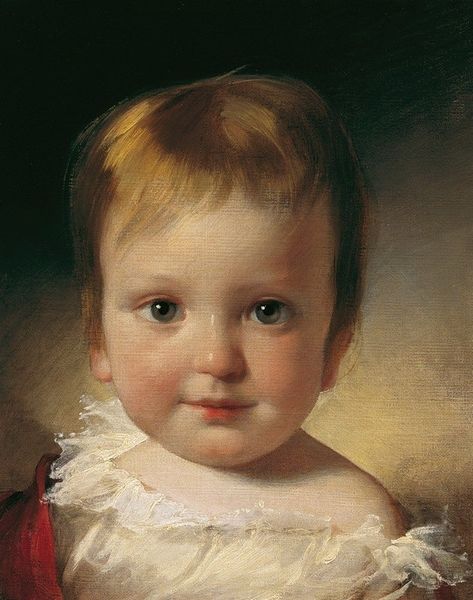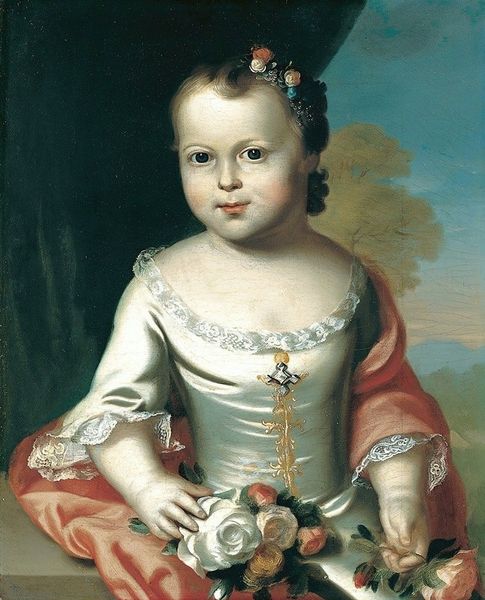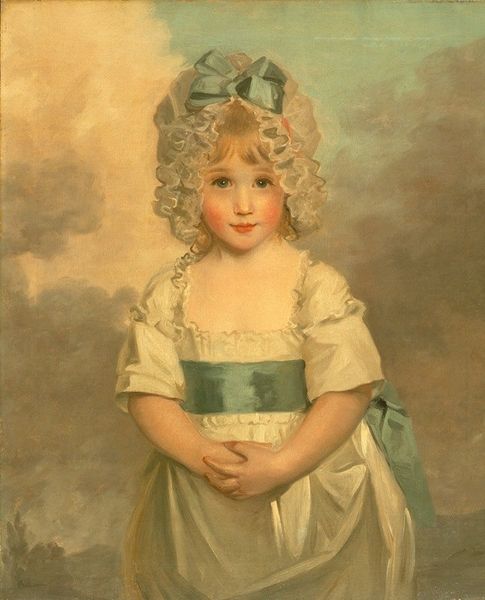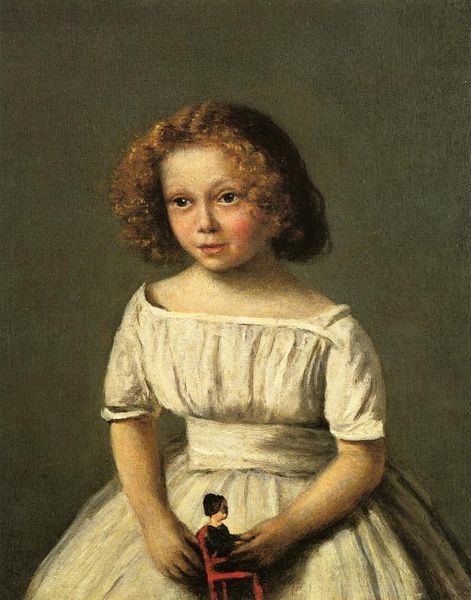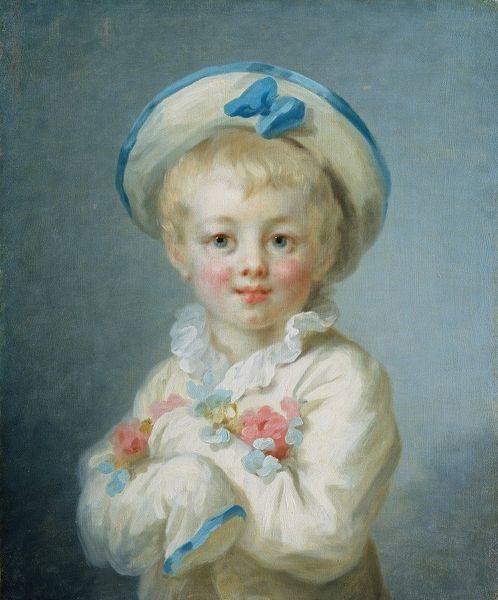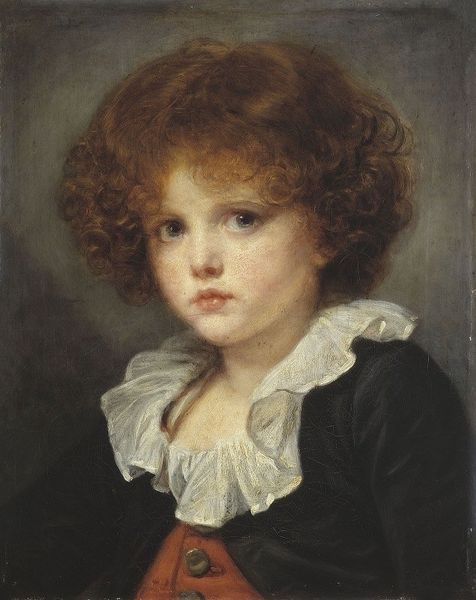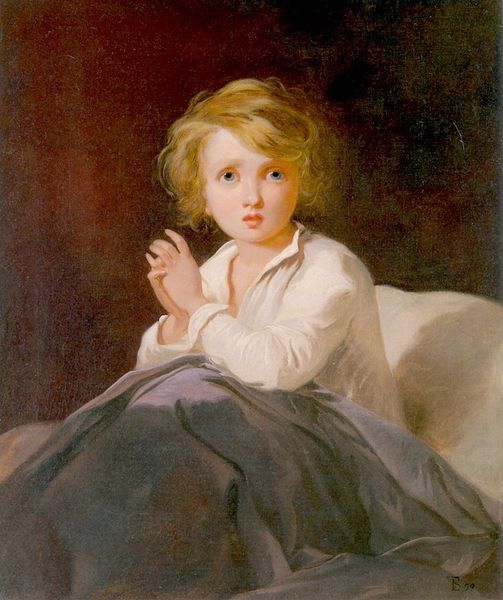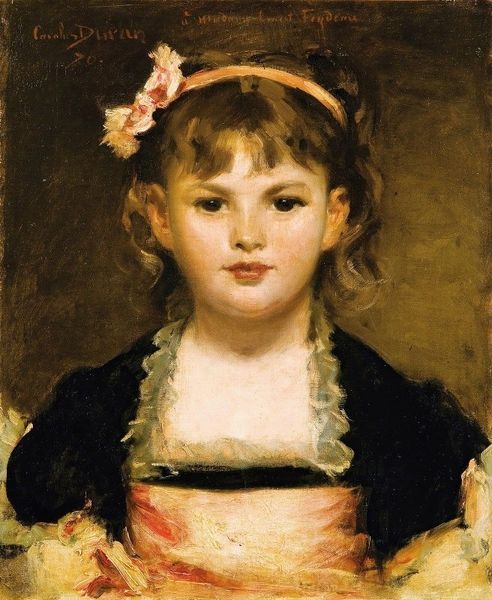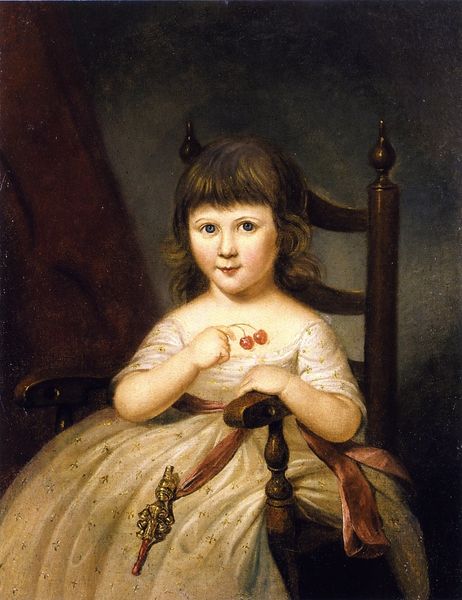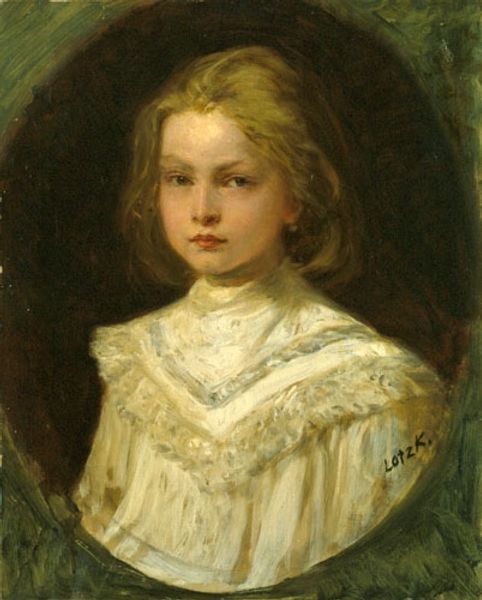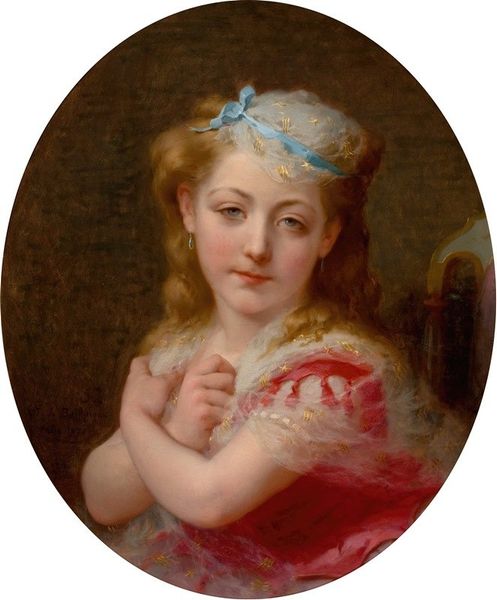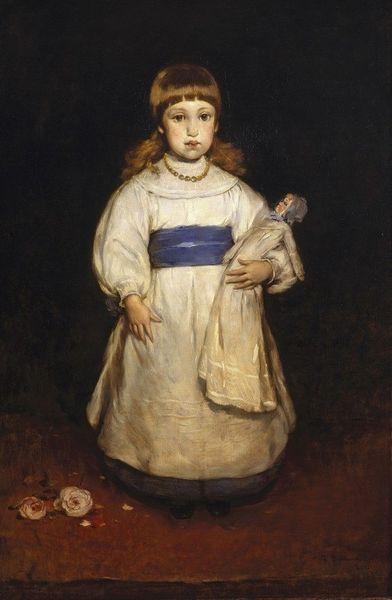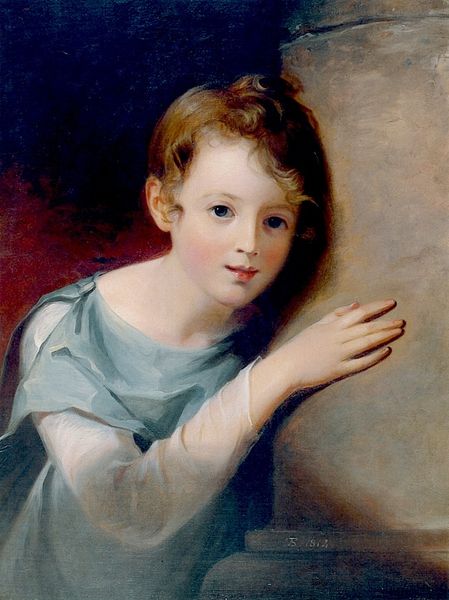
Emilie Werner, the daughter of the married couple Johann and Magdalena Werner 1835
0:00
0:00
painting, oil-paint
#
portrait
#
figurative
#
painting
#
oil-paint
#
figuration
#
romanticism
#
genre-painting
Copyright: Public Domain: Artvee
Curator: This is Ferdinand Georg Waldmüller's painting from 1835, titled "Emilie Werner, the daughter of the married couple Johann and Magdalena Werner." Editor: It strikes me immediately with its intense stillness, almost photographic in its clarity. The darkness behind the girl presses forward, highlighting the tangible textures of the fabrics and even her skin. Curator: Precisely! Waldmüller was known for his masterful use of light and shadow. In this portrait, we see a synthesis of Romanticism and the rising Biedermeier style, capturing both idealized beauty and domestic intimacy. Note the apple she holds—a potent symbol. Editor: It's also about status. The apple implies Eden, a lost innocence of course, but even her clothes and the doll show the comfortable class that she's been afforded. Consider the labour to create those things. I'm fascinated by that materiality—the brushstrokes carefully rendering the folds of her dress. Curator: The apple is indeed loaded. In religious iconography, it links to original sin, but in portraits, it’s frequently a symbol of youth and virtue. It’s delicately held as she looks upon us. And consider her namesake: it’s more than just a depiction of a child; it’s a cultural artifact embodying familial pride. Editor: Family commissions in painting and craft are really special because labor in producing them, when it is thoughtful and intentional, holds a kind of intimate time-based symbolism of its own. And you know, the smoothness of the doll compared to the rougher texture of the apple contrasts in a rather peculiar way, isn't it? Curator: An intriguing observation. I agree it presents the concept of innocence through different material vocabularies and their associations—the idealized playmate versus natural sustenance. Both contribute to the larger narrative that is the Werner family’s status. Editor: So much can be communicated with material when it is considered beyond simply representational terms. Waldmüller shows how materiality also encodes class and labour for a given artwork's patron. I'm left with more than an image of a girl. It's a map of the historical, even anthropological time. Curator: It’s a tender portrayal that encapsulates many things simultaneously. Waldmüller certainly gifted the family more than a likeness; he crafted a lasting cultural artifact.
Comments
No comments
Be the first to comment and join the conversation on the ultimate creative platform.
